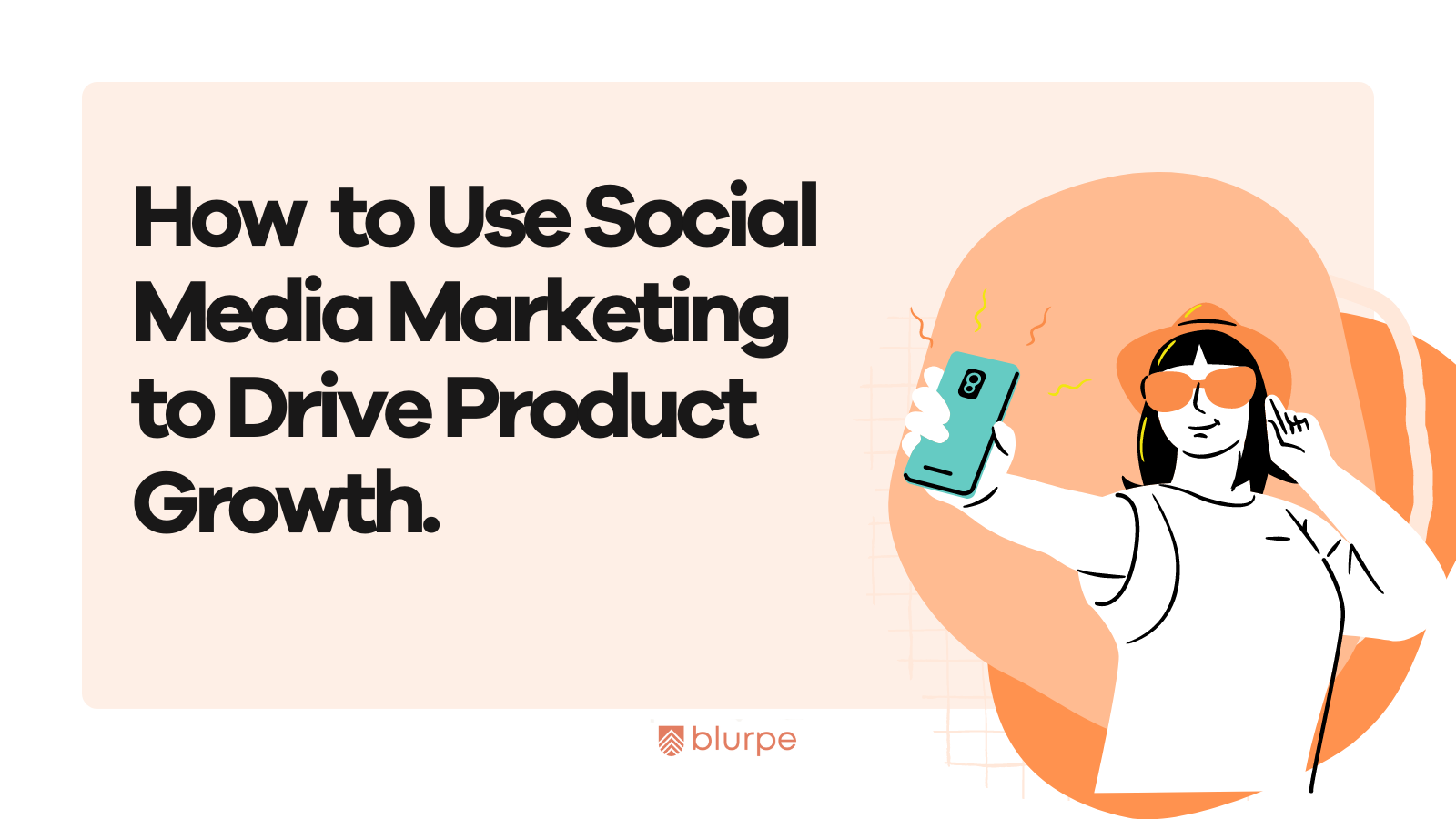Social media has become an integral part of our everyday life. Everyone is on it for different purposes but the one unifying motive is to foster connection. In this digital age, social media activities have gone beyond personal use. Numerous brands have keyed into using it for business growth. With billions of active users across various social media networks, a well-crafted social media marketing strategy can significantly impact a product’s success, build brand awareness, aid community management and drive product growth.
Before we delve into how to use social media marketing to boost product growth, we should touch on what it is.
What is Social Media marketing?
Unlike regular responses you’d find online describing it plainly as “Simply making use of social media platforms like Instagram, Twitter, YouTube, WhatsApp, Threads, TikTok (and virtually all social platforms you can think of) to achieve set out marketing goals”.
It is a bit more in-depth than that. This form of online marketing requires the use of a marketing strategy which would consist of social media tactics, updated media trends and content strategy in order to achieve set goals. Goals which can vary from attracting a much wider audience to pulling in quality leads, to serving as a medium for customer service.
Now that that’s out of the way, let’s talk about how to get a return on investment for your product.
Set clear and specific Goals

Your product has different needs at different stages. Identifying what stage your product is currently in would help you set clear and measurable goals such as awareness, customer acquisition etc. So you need to ask:
- What exactly do I want for this product now? (The goal)
- For how long? (This is where you set a time-limit)
- How do I know I’m hitting the goal marks? (Measure)
These questions ensure that you are not just operating mindlessly without aim, and that you are measuring for growth by checking key metrics.
Do a Research on your Target Audience
There are millions of people active online and as much as you would like them to all flock towards your product, the truth is not all of them are your ideal customers or even fit into your target demographic. What you need to do is understand who you are online for. Know what times they are most likely to be online, what social media platforms they are most active on, what they would consider as relevant content; what their pain points and challenges are, the list could go on and on.
The mistake a lot of brands make is to run on assumption, thinking what they suppose their users want to see, is actually what they want to see. BIG MISTAKE! The more detailed your research on your target customers is, the more probable that your social media marketing efforts will pay off.
Choose the most fitting Platform
Your target audience is not everywhere; all at once.
Read that two more times and then say it aloud once. Good! What that means is that although like you, most people have more than one social media presence, they are averagely most active on just one or two.
Get started on the most fitting platform for your users. While I can’t tell you which social network is best for your product, there are staples. Most fashion lovers are active on Instagram, TikTok, and Pinterest because they are visual platforms. Tech startups have flocked more and more to Twitter while using Instagram for brand building/perception and for B2B businesses, LinkedIn is the way to go. Essentially, in order to drive the growth of your product, you need to go where your product messaging will be better welcome.
Draft a Content Strategy
You have to comprehend one thing, being on social media equals churning out content, especially where it concerns product growth. Carry out a competitor content analysis, identify gaps that you can exploit to your product’s advantage, and get creative in passing across your product’s unique selling point.
Your content plan should have a mix of visual content, blog posts, infographics, podcasts even. At this point, I should say that just like you should know your audience, you should also know the right content format that resonates with your users and the ideal platform for it.
As much as you have a lot to say about your product, I’m sure your users do too, so incorporate user generated content. You can also use that as an avenue to gather customer feedback which can help you build to achieve product-market fit/ serve your users better. More importantly make sure that your social media strategy is not outdated by keeping up with trends and curves across multiple platforms.
Create a Content Calendar

It is one thing to have a mapped out plan and another to stick to it. Content calendars are a good way to make sure that you are consistently putting out content on your media feeds. Most content marketers say that the algorithm favours consistency. You can read more about how consistency matters in social media marketing here.
Thankfully there are social media management tools that help schedule posts in advance, some of which include hootsuite , iconosquare, planoly and so many others.
Churn out High-Quality Content
You can tell a bad or not so good content when you see one, it’s those types you quickly scroll over, you don’t want that for your product. But I can also bet that’s what you’ll get if you don’t invest in content creation tools or you don’t hire a good content marketer/creator (which by the way, you should already know that Blurpe can help with, by connecting you with quality marketing talents).
In the long run, to keep your product top of mind with your users, the content has to be relatable. Whatever solution the product provides revolves around the needs of your users, so creating content that people can easily connect with helps to increase the engagement rate of your posts and in extension, is highly beneficial to the product growth.
As much as possible endeavour to dish out engaging content, your users don’t just want to see the latest feature, they also want to see the faces behind the product so sharing a bit of the company’s culture wouldn’t hurt. Create valuable content by giving valuable insights into topics that interest your users. To drive visibility, the best types of content are shareable contents so try to talk more about relevant topics that are in line with your product message and goals.
Influencer Marketing and Social Media Advertising
These two are paid methods of utilising social media marketing. There are some goals that organic contents alone cannot achieve hence you need to pull in the paid guns (see what i did there, *paid guns not big guns*).
For instance, in running a marketing campaign, you would need to reach a lot more people. With influencer marketing, a pro tip is to use influencers whose value align with the company’s.
Another method of utilising influencer marketing is by leveraging the wide reach of influencers and established content creators. How? What you want to do when keying into this is do collaborative posts/campaigns with selected influencers. This places your product in the front seat row of the influencer’s audience while banking on the persuasive hold the influencer has over his/her community/followers. This is why it is important to go for the right fit of influencers for your product.
On the other hand for media Ads, they are a lot more subtle than google ads for instance; following tweaks on media platforms like Instagram and Twitter, you’d hardly notice when interacting with social media ads which makes it seamless for potential users to interact with.
Track and Measure
Analysing your social media metrics is critical for determining the effectiveness of your plan. Use analytics tools such as sprout social, hubspot, buzzmo etc to track engagement, reach, and conversion rates. Analyse data on a regular basis to find trends, strengths, and places for improvement.
Conclusion
Employing social media marketing as a tool for product growth revolves around using the right social channels, having the right hire behind the wheels, creating and sharing compelling content that can be repurposed and redistributed and even more particularly using your media platform as a tool to engage your online audience. Social media is a tool, in the hands of a good hire it should be used to educate your audience about your product, it’s features and uses, foster connection between the product and it’s users and possibly a channel for communication for your users. Social media marketing, if used the right way, has the capacity to spur sporadically your product’s growth.

Thanks for this.